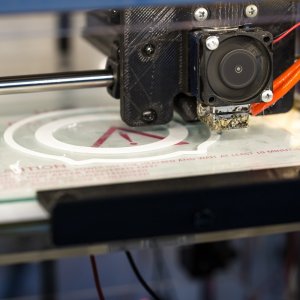Taking the Mexican Aerospace Industry to the Next Level

STORY INLINE POST
Q: What role does Hot Isostatic Pressing (HIPing) play within HT-MX’s operations?
A: HIPing is a specialized process for parts with high mechanical and quality requirements. Through this process, pieces are heated to 80 percent of their melting temperature and pressurized to 30,000 pounds under an inert atmosphere using a noble gas. This process densifies the material and eliminates any porosity within it, increasing fatigue resistance. This process is important for pieces used in the interior of aircraft engines, turbines, rotors and key components of landing gear.
We developed HIPing jointly with an aerospace OEM in Chihuahua. It was a long process that required several validations to meet aerospace certifications. HIPing is only offered in a few countries, including the US, the UK and France.
Q: How can HIPing and complex processes take the Mexican aerospace industry to the next level?
A: The introduction of HIPing does not only showcase the growth of HT-MX but also contributes to the generation of a highly-developed manufacturing ecosystem that can enter the market for higher value-added parts. Through advanced processes, companies in Mexico can access a larger and more complete supplier base and transfer more complex operations to the country, helping the local industry put maquila operations behind it in favor of more advanced manufacturing processes.
Q: What role do 3D-printed parts play within the aerospace industry?
A: Although most aerospace parts are not 3D-printed, the additive manufacturing field is advancing, albeit more slowly than in other industries. Many companies are investing in R&D and there is an interesting future for 3D printing. It will not fully replace traditional machining but there are new opportunities and HT-MX, as the first and only supplier in the field, is in a great position to provide service and technical support.
Q: What does HT-MX’s client portfolio look like?
A: Our quality, certified and reliable services predominantly focus on the aerospace sector. However, HT-MX can work with other industries, such as automotive and oil and gas.
Q: How do HT-MX’s laboratory services complement the company’s offer?
A: During our processes, we must verify the quality of our pieces through several techniques, which include microstructure analyses, grain type and size to services. These testing capabilities can be used to analyze the work of others. HT-MX has a small division that provides these external services, which are usually offered by laboratories. We are competitive thanks to our ability to respond quickly during crises.
Our laboratory services are supported by our six material engineers. They are experienced in all types of parts, from castings to additive manufacturing. HT-MX is not a complete metallurgical laboratory but we can provide laboratory testing for heat-treated parts and offer a fast response time.
Q: How does HT-MX address the challenge of finding well-trained talent?
A: HT-MX does not have a large demand for personnel but we do have relatively specific requirements for our talent, mainly regarding knowledge of metallurgical materials. Fortunately, Chihuahua has made an effort to develop engineers and specialized technicians over the last several years. All our employees graduated from local universities and are very capable. Talent has not been HT-MX’s main challenge and thanks to our people, we have been able to move forward.
Q: What role will Mexico play in the aerospace supply chain of the future?
A: Mexico has a window of opportunity and we must take advantage of it. Competition in other regions of the world has intensified, so Mexico must offer competitive services, applications and prices. The pandemic accelerated the nearshoring process and the country has come a long way in other industries, such as the automotive sector.
The Mexican ecosystem has much work to do to seize the available opportunities. Success depends on suppliers but also on the mindset and awareness of OEMs and Tier 1s. Exclusively on the matter of production costs, Mexico cannot compete with China. But Mexico offers a complete package: service, logistics, times and reliability. Mexico must ensure that production transfers to the country to ensure it can leap forward.
Q: What are the new trends and innovations in heat treatment?
A: The main innovations and changes in heat treatments are tied to the materials used by the industry. As long as the material selection remains the same, treatments will as well. Improvements concern efficiency, energy use, processes and quality controls.
The new trends include more complex materials, alloys and processes, such as bracing or fusion-branding, which require more specific heat treatments, which is where our offer becomes more attractive. HT-MX focuses on pieces of greater technical complexity.
Q: What partnerships is HT-MX working on?
A: HT-MX is an active participant in Chihuahua’s Aerocluster and FEMIA. HT-MX keeps in contact with OEMs and ensures its certifications are up to date so that we are always prepared for new projects. We also work with local manufacturing companies. HT-MX is open to exploring new markets and processes, as we did with HIPing. Our vision is to continue to be an industry facilitator, filling the gap in the manufacturing chain.
HT-MX is a Mexican heat-treatment plant based in Chihuahua. It offers quenching, carburizing, carbonitriding, nitriding, nitrocarburizing, annealing, normalizing and stress relief services, among others. In addition, HT-MX performs hardness and microhardness tests and it is the only company offering hot isostatic pressing (HIP) in Latin America.








 By Antonio Gozain | Senior Journalist and Industry Analyst -
Tue, 04/12/2022 - 11:01
By Antonio Gozain | Senior Journalist and Industry Analyst -
Tue, 04/12/2022 - 11:01











